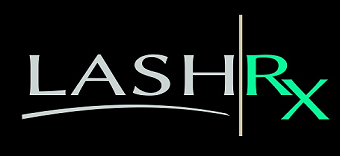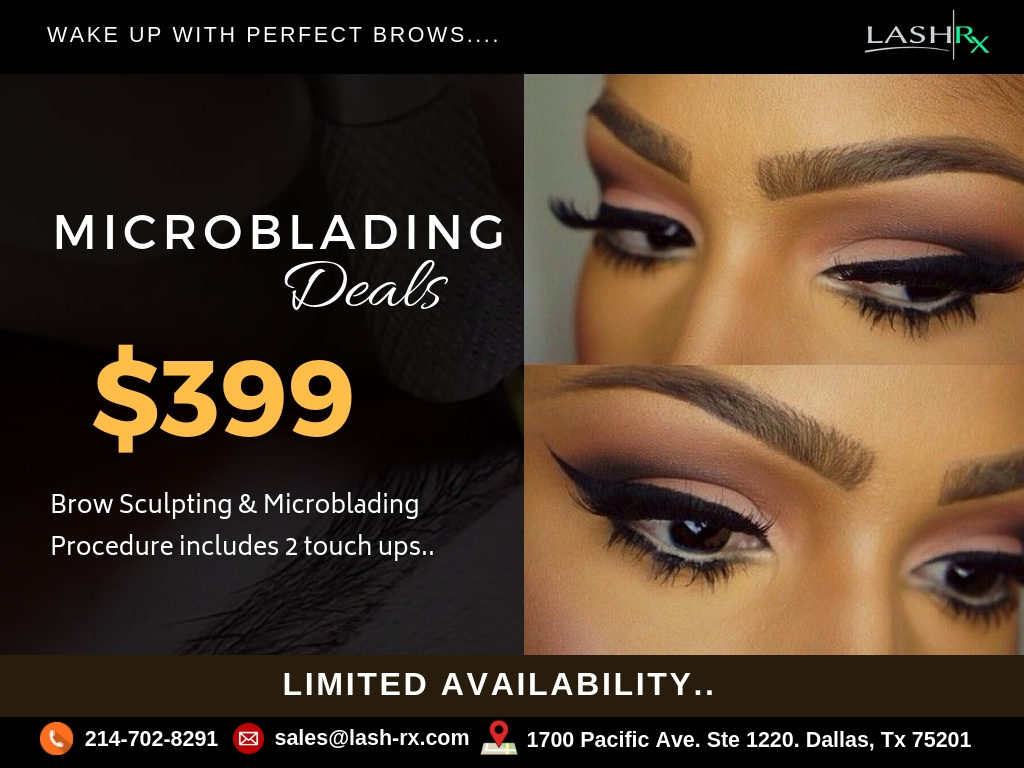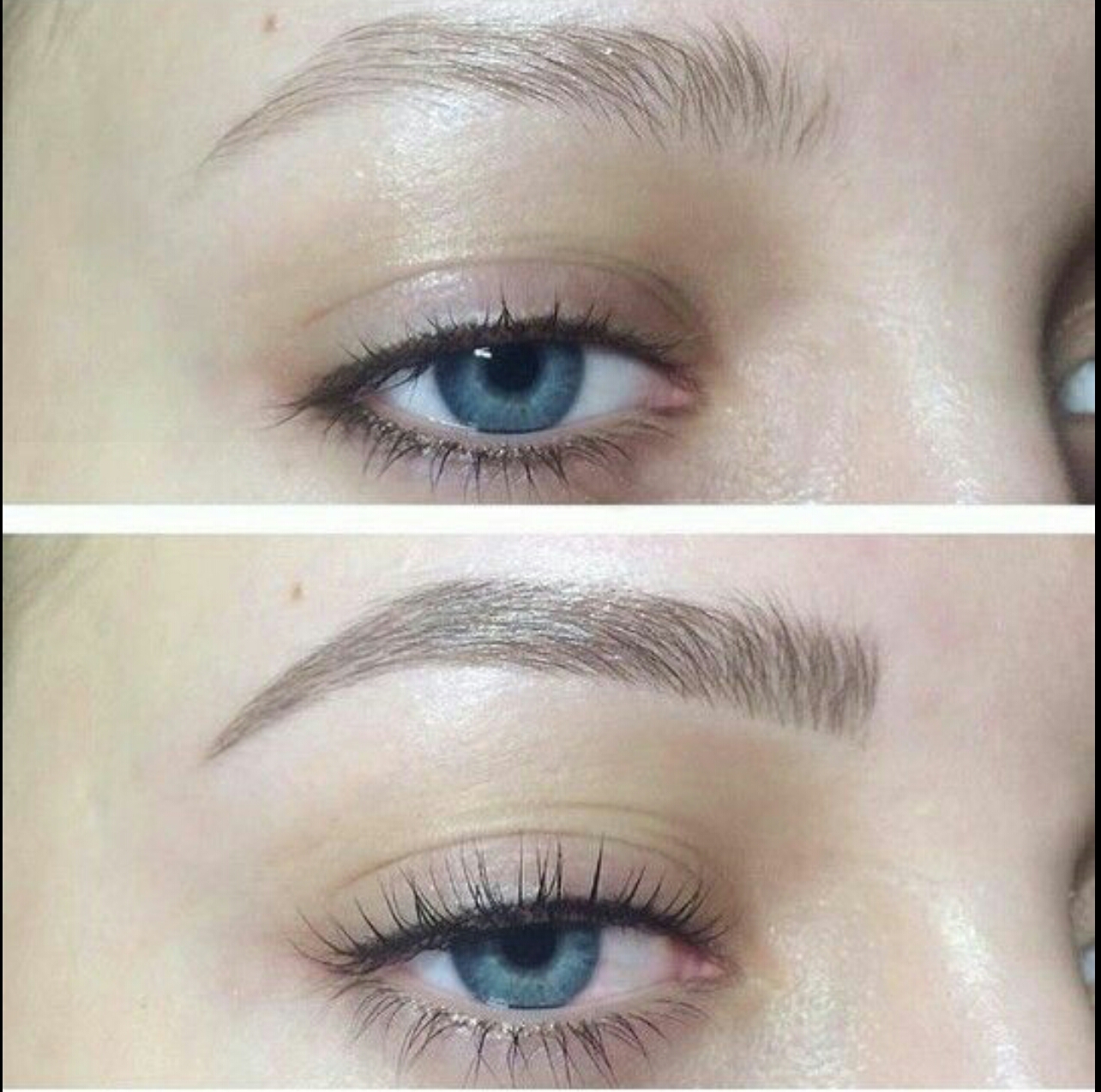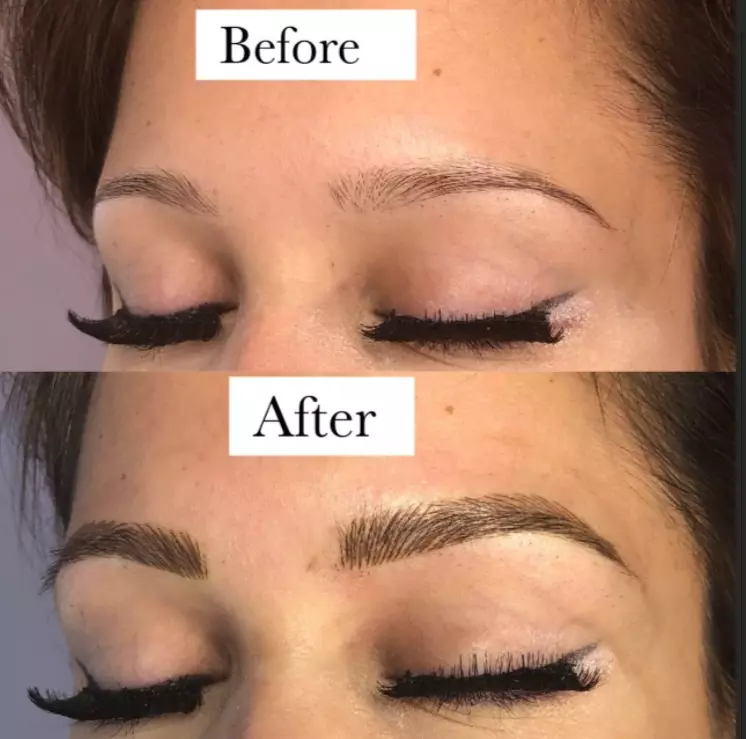Imagine waking up to perfectly groomed brows every day without having to worry about filling in, smudging, smearing or disappearing.
We create the most natural looking, realistic hair strokes in eyebrow permanent makeup with the use of Manual Microblading, also known as Eyebrow Embroidery. This technique allows us to create crisp, fine hair strokes that fill in thin brows, brows with bald spots, do total brow reconstruction and even conceal alopecia.
Microblading |
|
|---|---|
| *Microblade Procedure Deposit Fee (non-refundable) $50 | |
| Microblade Procedure: 3 touch ups included | $499 |
| Microblade Procedure: 2 touch ups included | $399 |
| First touch up – within 8-12 months of procedure | $150 |
| Touch up within 12-18 months | $200 |
PLEASE NOTE: Eyebrows will appear darker and bolder for the first 10 days, due to natural scabbing and healing. This is very common for all permanent cosmetic procedures.
What NOT TO DO After the Microblading Treatment
After the procedure, AVOID the following actions and activities:
- Applying any type of soap, body wash, shampoo or other cleanser for the first five days following the procedure. Other than that, you can (and should!) shower and bathe as normal.
- Picking or scratching at the flaky or dry skin. Let this skin fall off naturally as picking can cause the skin to scar and/or lead to premature loss of pigment. Important Note: Once the flakes have fallen off on their own, a shiny layer of healed skin will take its place. At this point, it may appear as if the color in your new 3D eyebrows has completely disappeared. Don’t worry!! As your skin regenerates, the color will begin to reappear slowly and take on a lighter shade. This will typically occur over the next couple weeks.
- Applying makeup to the treated area for two weeks following the procedure. Applying any kind of cosmetics can hinder the healing process.
- Applying Vaseline, Neosporin and other types of petroleum-based products during the healing period.
- Bleaching, tinting or dying the treated area for 4 weeks following the procedure.
- Applying anti-acne and skin-lightening products during the healing period.
- Applying anti-aging or facial products that contain Alpha Hydroxyls, Retin-A, Glycolic or Lactic acids.
- Working out and/or sweating for three days prior and one week following the microblading treatment.
- Threading, waxing or using hair removal products during the healing period.
- Swimming in pools, hot tubs/Jacuzzis or other bodies of water for two weeks following the procedure.
- Soaking your face underwater in a bathtub or spraying water directly from the shower to the treated area for two weeks following the procedure.
What to Do After the 6-8 Week Healing Period
Here are some tips for maintaining the success of the procedure after the healing period is complete:
- Limit exposure to the sun – too much exposure can cause the pigment to become faded or discolored. After the healing period is complete, you may apply sunscreen to the treated area. And when possible, wear a hat and sunglasses for added protection.
- If you go swimming and the microbladed area comes in contact with chlorine, rinse and dry the treated area thoroughly.
- Continue to avoid Glycolic acid and other anti-aging products as sustained use can cause the pigment to lighten.
- If you are planning to have laser hair removal or laser resurfacing treatment after the healing period, please let the technician know ahead of time, and use your best judgment in deciding whether to move forward with this procedure. Laser procedures have been known to lighten, darken or otherwise discolor the treated area.
After the treated area has healed completely, any adjustments can be made (if necessary) at your follow up visit, which should be no earlier than 6-8 weeks after the initial treatment.
Clients Not suitable for Microblading procedures
1. Clients prone to keloids
Tattooing on a client prone to keloids may result in keloid scarring. Additionally, the skin may also have difficulty taking to the pigments. For both the clients’ health and comfort, refrain from performing microblading on their keloids-prone skin.
2. Clients with transmittable blood diseases (e.g. HIV, hepatitis)
While we don’t want to discriminate against people living with transmittable blood diseases, performing microblading on these clients will endanger the safety of other clients.
There is sufficient evidence supporting the risk of syphilis and hepatitis B and C through tattooing.
Although you should practice proper sanitization and sterilization for your tools, it’s better to be safe than sorry. Clients will also rest easier knowing that you do not perform procedures on people with transmittable blood diseases.
3. Clients with skin complications and diseases, particularly in the area of treatment
Regardless of what skin complications the client has, the bottom line is that any form of tattoo will stress out their skin and possibly exacerbate the situation. We actively discourage microblading for clients living with psoriasis, eczema, keratosis pilaris, and dermatitis. In addition to any health risks, skin that often sheds will not be a good candidate for microblading. Shedding skin does not hold pigment very well.
4. Clients who have had fillers, Juvederm, or Botox in the desired treatment area
5. Clients in the process of chemotherapy
Clients undergoing chemotherapy will have sensitive tissues. They will be more prone to bleeding and infections. Not only will their microblading procedure be uncomfortable, it will also be extremely risky.
A microblading session is best scheduled six weeks before or after chemotherapy.
Note that clients will also need a touch-up after the first session. Therefore, for clients opting to have microblading before chemotherapy, you should schedule their touch-up at a date that doesn’t interfere with their chemo.
6. Clients with extremely oily skin
We don’t want to discriminate against skin type. However, extremely oily skin does not respond well to tattoos.
For one thing, the excess oil in the skin will impede the healing process after the procedure. For another, the pigment may not last as long as it would on other people.
You may perform the procedure on clients with mildly to moderately oily skin. However, we would advise against attempting the procedure on someone with extremely oily skin.
7. Clients allergic to numbing agents
A client who is allergic to your preferred numbing agent will be unable to sit through a microblading procedure.
Numbing agents are essential to ensuring client comfort and safety. Enduring too much pain can become too physically and emotionally stressful. Therefore, performing microblading procedures without the appropriate numbing agents can present health risks to the client.
8. Clients with “oversaturated” skin
Clients with skin oversaturated from previous permanent makeup procedures are not good microblading candidates, as well.
Depending on the state of the previous procedure, you may decide not to proceed with microblading. It’s possible that the skin will not respond well to the new pigment or that the end result will look unappealing afterward. If both or either of these are the case, it’s best to not give the client a microblading procedure.
9. Clients who are pregnant or breastfeeding
There is no research proving that microblading is harmless for babies, both unborn and born.
Microblading involves inserting ink pigments into the skin. There is reason to question if these pigments will somehow affect a mom’s breast milk in a significant, negative way.
Even if the client is willing to risk it, you shouldn’t be. When you have pregnant or breastfeeding client, you become responsible not just to the client herself but also the baby. Why? Because the baby is directly affected by any procedure you perform on their mother.







